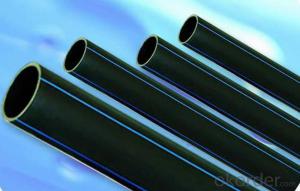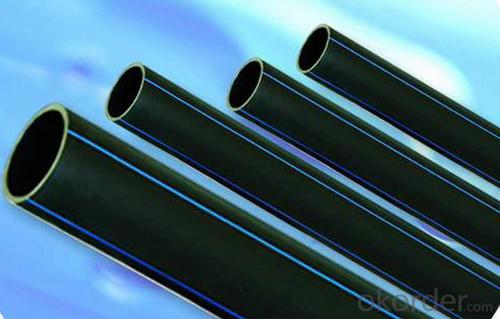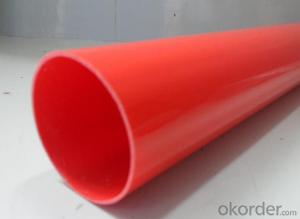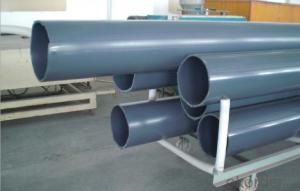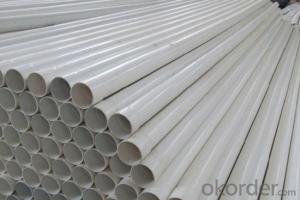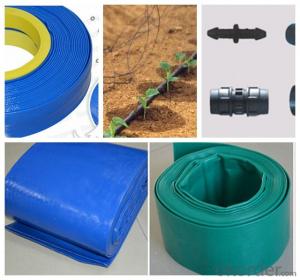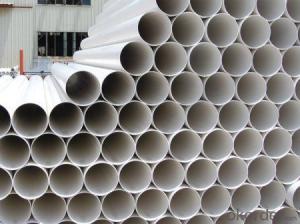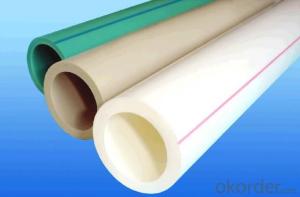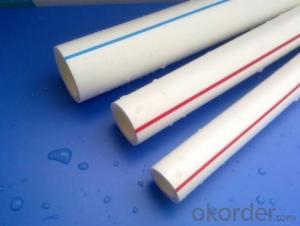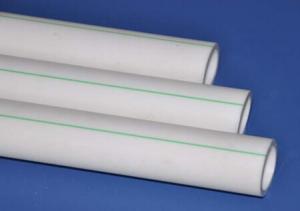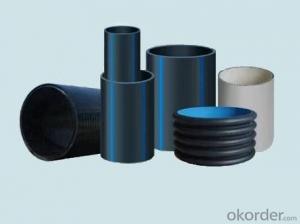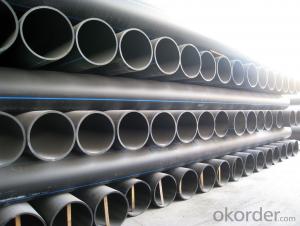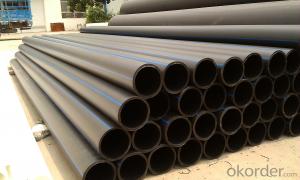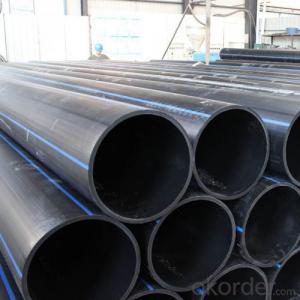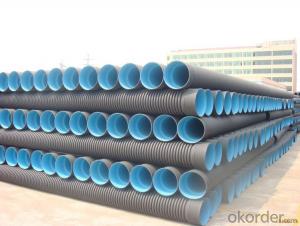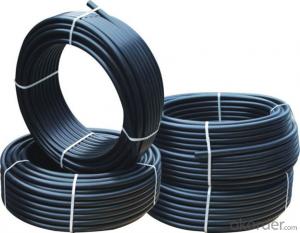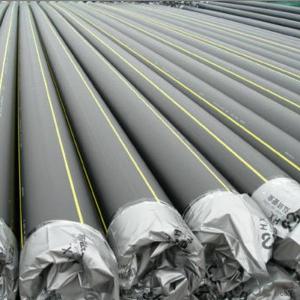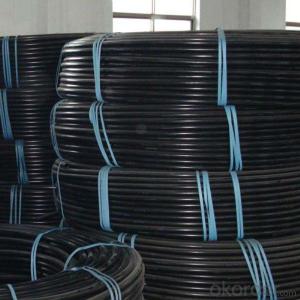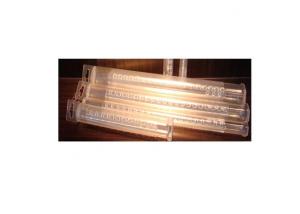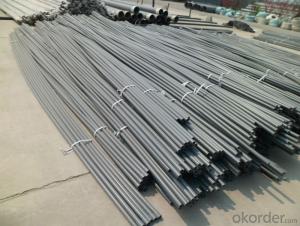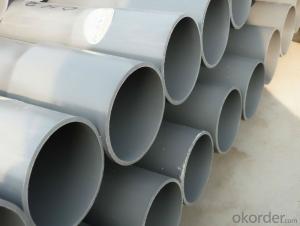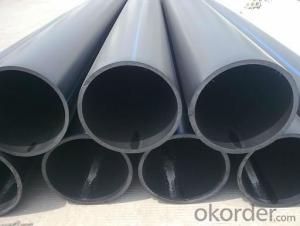Plastic Tubes HDPE Pipe 100
- Loading Port:
- China Main Port
- Payment Terms:
- TT OR LC
- Min Order Qty:
- -
- Supply Capability:
- -
OKorder Service Pledge
OKorder Financial Service
You Might Also Like
Physical properties[edit]
Polyethylene is a thermoplasticpolymer consisting of long hydrocarbon chains. Depending on the crystallinity and molecular weight, a melting point and glass transition may or may not be observable. The temperature at which these occur varies strongly with the type of polyethylene. For common commercial grades of medium- and high-density polyethylene the melting point is typically in the range 120 to 180 °C (248 to 356 °F). The melting point for average, commercial, low-density polyethylene is typically 105 to 115 °C (221 to 239 °F).it is transprant.
Chemical properties[edit]
Most LDPE, MDPE and HDPE grades have excellent chemical resistance, meaning that it is not attacked by strong acids or strong bases. It is also resistant to gentle oxidants and reducing agents. Polyethylene burns slowly with a blue flame having a yellow tip and gives off an odour of paraffin. The material continues burning on removal of the flame source and produces a drip.[3] Crystalline samples do not dissolve at room temperature. Polyethylene (other than cross-linked polyethylene) usually can be dissolved at elevated temperatures in aromatic hydrocarbons such as toluene or xylene, or in chlorinated solvents such as trichloroethane or trichlorobenzene.[4]
GB/T13663-2000:
| PE63管材规格 | |||||
| 公称 外径dn,mm | SDR33 | SDR26 | SDR17.6 | SDR13.6 | SDR11 |
| 公称压力 PN,Mpa | |||||
| 0.32 | 0.4 | 0.6 | 0.8 | 1.0 | |
| 公称 壁厚 | 公称 壁厚 | 公称 壁厚 | 公称 壁厚 | 公称 壁厚 | |
| 16 | 2.3 | ||||
| 20 | 2.3 | 2.3 | |||
| 25 | 2.3 | 2.3 | 2.3 | ||
| 32 | 2.3 | 2.4 | 2.9 | ||
| 40 | 2.3 | 2.3 | 3.0 | 3.7 | |
| 50 | 2.3 | 2.9 | 3.7 | 4.6 | |
| 63 | 2.3 | 2.5 | 3.6 | 4.7 | 5.8 |
| 75 | 2.3 | 2.9 | 4.3 | 5.6 | 6.8 |
| 90 | 2.8 | 3.5 | 5.1 | 6.7 | 8.2 |
| 110 | 3.4 | 4.2 | 6.3 | 8.1 | 10.0 |
| 125 | 3.9 | 4.8 | 7.1 | 9.2 | 11.4 |
| 140 | 4.3 | 5.4 | 8.0 | 10.3 | 12.7 |
| 160 | 4.9 | 6.2 | 9.1 | 11.8 | 14.6 |
| 180 | 5.5 | 6.9 | 10.2 | 13.3 | 16.4 |
| 200 | 6.2 | 7.7 | 11.4 | 14.7 | 18.2 |
| 225 | 6.9 | 8.6 | 12.8 | 16.6 | 20.5 |
| 250 | 7.7 | 9.6 | 14.2 | 18.4 | 22.7 |
| 280 | 8.6 | 10.7 | 15.9 | 20.6 | 25.4 |
| 315 | 9.7 | 12.1 | 17.9 | 23.2 | 28.6 |
| 355 | 10.9 | 13.6 | 20.1 | 26.1 | 32.2 |
| 400 | 12.3 | 15.3 | 22.7 | 29.4 | 36.3 |
| 450 | 13.8 | 17.2 | 25.5 | 33.1 | 40.9 |
| 500 | 15.3 | 19.1 | 28.3 | 36.8 | 45.4 |
| 560 | 17.2 | 21.4 | 31.7 | 41.2 | 50.8 |
| 630 | 19.3 | 24.1 | 35.7 | 46.3 | 57.2 |
- Q: How are plastic tubes stored and transported?
- Plastic tubes are typically stored and transported in various ways depending on their size and purpose. Smaller plastic tubes, such as those used for cosmetic or pharmaceutical products, are often packaged in boxes or blister packs and then stored on shelves or in warehouses. They can be transported using crates, pallets, or containers in trucks, ships, or airplanes. Larger plastic tubes, like those used in plumbing or construction, are usually stored and transported on reels, coils, or spools, which are commonly stacked or loaded onto trucks or placed in shipping containers. Overall, the storage and transportation methods for plastic tubes aim to protect them from damage and ensure efficient handling and distribution.
- Q: Sticks into her throat? What is that? what health problem does she have?
- That tube Is so she can breath she has had a tracheotomy.
- Q: Why do all squeeze tubes have a square at the top?
- ummmm,, is it like putting square peg into a round hole?,,,,lol
- Q: Are plastic tubes suitable for use in the pharmaceutical packaging industry?
- Yes, plastic tubes are suitable for use in the pharmaceutical packaging industry. They offer several advantages such as being lightweight, flexible, and easy to handle. Plastic tubes also provide excellent barrier properties, ensuring the protection and preservation of pharmaceutical products. Additionally, they can be customized to meet specific requirements, such as tamper-evident features and child-resistant closures, making them a popular choice for pharmaceutical packaging.
- Q: I've been trying to study the types of fittings that are used to transmit fluids and I thought you could help me out with this concepts. Thank you.PS. English is not my first language, that's why I need assistance :D
- Pipe is generally termed for rigid tubes. Tubes are flexible profiles without any reinforcement. Hoses are flexible tubes with multiple reinforcements.
- Q: Do plastic tubes have any odor or taste?
- Yes, plastic tubes can have a slight odor or taste, especially if they are made from low-quality plastics or have been exposed to certain chemicals. However, high-quality plastic tubes that are specifically designed for food or medical use are usually odorless and tasteless.
- Q: Can plastic tubes be used for pool installations?
- Yes, plastic tubes can be used for pool installations. They are commonly used for the plumbing system of pools to transport water to and from the pool, as well as for other pool-related purposes such as drainage and filtration systems. Plastic tubes are lightweight, durable, and resistant to corrosion, making them a suitable choice for pool installations.
- Q: Are plastic tubes suitable for pneumatic control systems?
- Yes, plastic tubes can be suitable for pneumatic control systems. Plastic tubes are lightweight, flexible, and resistant to corrosion, making them a cost-effective choice for many pneumatic applications. Additionally, plastic tubes can be easily cut and assembled, allowing for easy installation and maintenance. However, the specific requirements of the pneumatic control system, such as pressure levels and temperature ranges, should be considered to ensure that the chosen plastic tube material can handle the necessary conditions effectively.
- Q: In the begging she chops off her arm but she puts the yellow thing around at the top her arm. WHY!!!!!!!!!!!!!!!!!!!!!!!!!!!!
- You mean like she tied it tightly around her upper arm? To slow down circulation to her arm, so she wouldn't bleed out and die so fast when she did.
- Q: Can plastic tubes be used for soundproofing?
- Yes, plastic tubes can be used for soundproofing. The dense and flexible nature of plastic materials can help block or absorb sound waves, reducing noise transmission. However, the effectiveness of plastic tubes for soundproofing will depend on various factors such as the thickness, quality, and design of the tubes, as well as the specific application and desired level of soundproofing.
Send your message to us
Plastic Tubes HDPE Pipe 100
- Loading Port:
- China Main Port
- Payment Terms:
- TT OR LC
- Min Order Qty:
- -
- Supply Capability:
- -
OKorder Service Pledge
OKorder Financial Service
Similar products
Hot products
Hot Searches
Related keywords
